Category:
Resource Type:
Language:
JAIDS 2016 Impact of Health Communication on HIV Treatment Outcomes – In-person and Online event
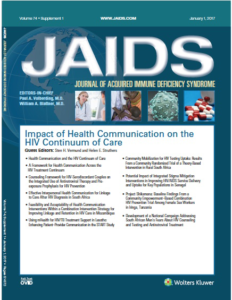
A selection of authors featured in the December 9 supplement of the Journal of Acquired Immune Deficiency Syndromes (JAIDS) presented.
Scaling Up and Sustaining Voluntary Medical Male Circumcision: Maintaining HIV Prevention Benefits
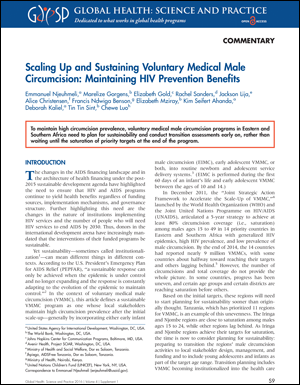
This article asserts that, in order to maintain high circumcision prevalence, voluntary medical male circumcision programs in Eastern and Southern Africa need to plan for sustainability and conduct transition assessments early on, rather than waiting until the saturation of priority targets at the end of the program.
Enhancing Benefits or Increasing Harms: Community Responses for HIV Among Men Who Have Sex With Men, Transgender Women, Female Sex Workers, and People Who Inject Drugs
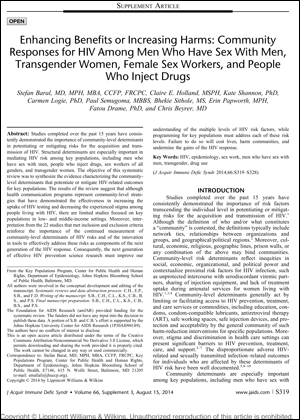
A synthesis of evidence characterizing community-level determinants and their influence on HIV-related outcomes for key populations, this systematic review revealed a limitation of studies conducted that focused on key populations in LMICs.
Role of Community-Level Factors Across the Treatment Cascade: A Critical Review
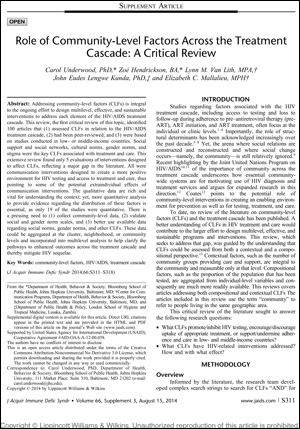
This review – the first critical review of literature that examines the role community-level factors (CLFs) play in the design of multilevel, effective and sustainable interventions that address all elements of the HIV/AIDS treatment cascade – identified 100 peer-reviewed articles based on studies in LMICs that assessed CLFs in relation to the HIV/AIDS treatment cascade.
Adolescent Sexual and Reproductive Health Services and Implications for the Provision of Voluntary Medical Male Circumcision: Results of a Systematic Literature Review
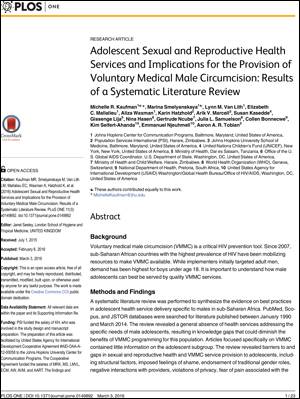
This literature review revealed a general absence of health services in Sub-Saharan Africa that addressed the needs specific to male adolescents, exposing potential knowledge gaps that could negatively influence the population’s benefit from voluntary medical male circumcision (VMMC) programming.
HIV Communication Capacity Strengthening: A Critical Review
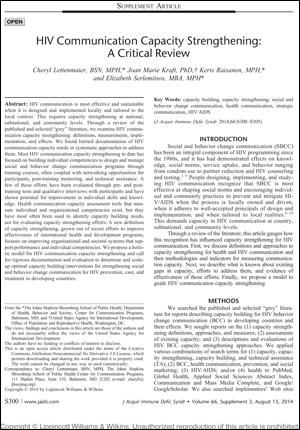
This gray literature review examined varying definitions, measurements, implementations and effects of HIV communication capacity strengthening. Based on their review, the authors make recommendations for establishing a holistic model for HIV communication capacity strengthening, among other things.
HIV Communication Programs, Condom Use at Sexual Debut, and HIV Infections Averted in South Africa, 2005

This secondary statistical analysis examines survey data from South Africa in 2005 on condom use at sexual debut, normally occurring before HIV infection from unprotected sex, and how this might have contributed to the reduction of HIV infections in the early 2000s.
Strengthening Nonrandomized Studies of Health Communication Strategies for HIV Prevention
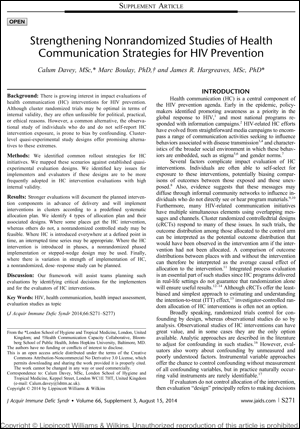
This article, focused on impact evaluations of health communication interventions for HIV prevention, was part of a special issue of JAIDS: Journal of Acquired Immune Deficiency Syndromes that was devoted to health communication and its role in and impact on HIV prevention and care.
Strategic Roles for Health Communication in Combination HIV Prevention and Care Programs
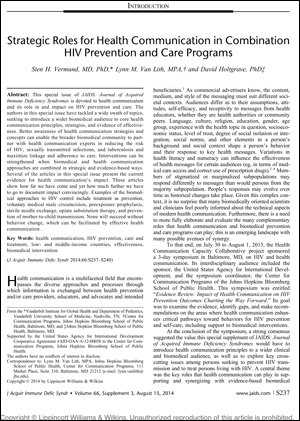
This is the introduction to a special issue of JAIDS: Journal of Acquired Immune Deficiency Syndromes that was devoted to health communication and its role in and impact on HIV prevention and care.
The Impact of Community-Level Factors on Condom Use
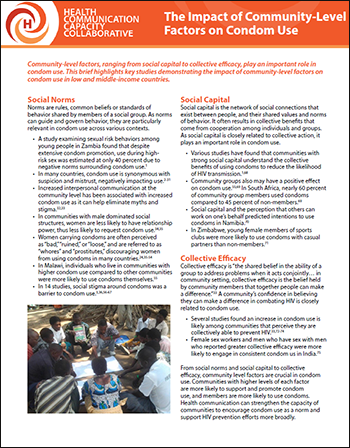
Community-level factors, ranging from social capital to collective efficacy, play an important role in condom use. This brief highlights key studies demonstrating the impact of community-level factors on condom use in low and middle-income countries.
Health Communication Impact on Condom Use
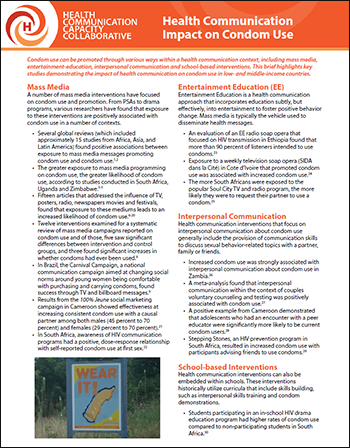
Condom use can be promoted through various ways within a health communication context, including mass media, entertainment-education, interpersonal communication and school-based interventions. This brief highlights key studies demonstrating the impact of health communication on condom use in low- and middle-income countries.
Impact of Health Communication Across the HIV Treatment Cascade

Current research underlines the importance of interpersonal communication in linkage to care through counseling, both in clinical settings and at patients’ homes.
Impact of Community Level Factors on HIV Outcomes
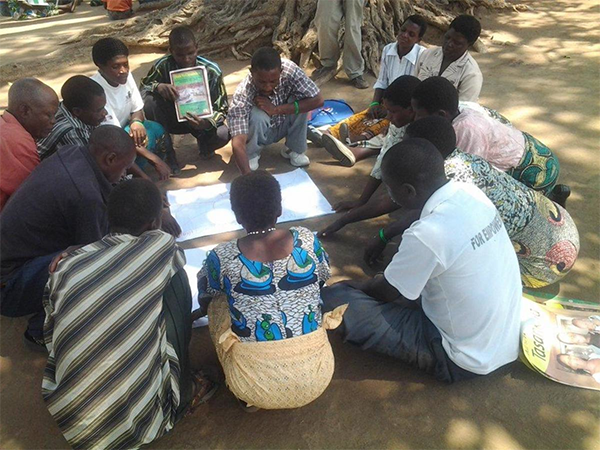
On July 1, HC3 held the third in a series of four webinars focusing on different aspects of HIV and health communication. Presentations focused on community level factors shown to impact HIV, what they are and what effect they have; community-level determinants that potentiate or mitigate HIV outcomes among key populations; and included an example of a community-based project that aimed to reduce HIV transmission and stigma in Mozambique by targeting social and gender factors.
Impact of Community-Level Factors on HIV Prevention Outcomes
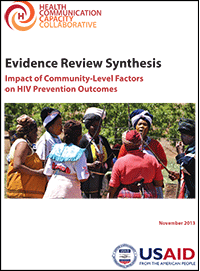
This review synthesizes diverse work from low- and middle-income countries as part of a larger effort to demonstrate the ways in which compositional and contextual community-level factors have been defined and assessed in work on HIV/AIDS. Impact of Community-Level Factors on HIV Prevention Outcomes
Spotlight on the Female Condom
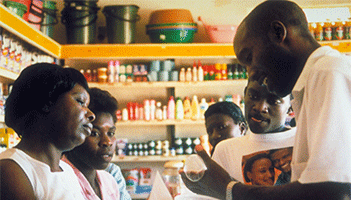
This fact sheet is part of a series on Demand Generation for 13 Life-Saving Commodities: A Synthesis of the Evidence. The female condom (FC) is the only women-initiated, dual-protection commodity that protects women from both STIs—including HIV—and unintended pregnancy. However, the FC remains an underutilized commodity in family planning and HIV prevention, and as such, has been identified by the UN Commission […]
Improving HIV Outcomes through Health Communication
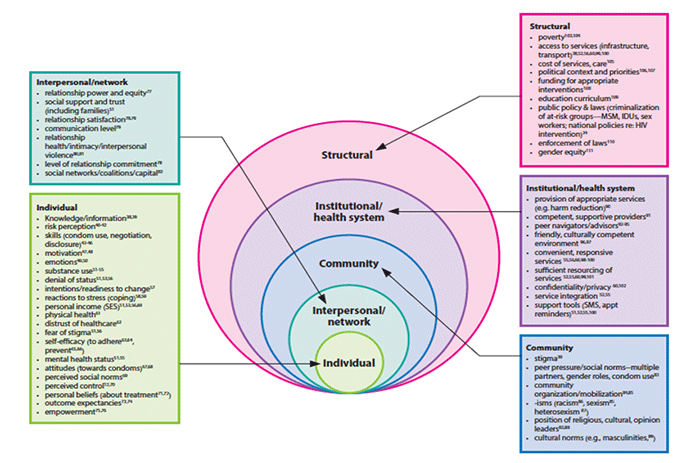
On March 26, HC3 hosted a webinar on Improving HIV Outcomes through Health Communication based on articles to be published in a supplemental issue of JAIDS planned for a July release. The webinar is the first in a series of four focused on HIV and health communication. WATCH a recording of the webinar. Presentations: The […]

